Members of the G&G group (coastal processes research theme) have recently had the privilege to be the first external users of the new HR Wallingford Fast Flow Facility (FFF). The FFF is a unique facility that allows studying wave-current-sediment interactions at a large scale. This collaboration came to support the work undertaken by postgraduate researcher Hachem Kassem whose PhD is partially funded by HR Wallingford ltd. The aim of the experiments was to study the role of coherent vertical turbulence structures in mobilising sediments under combined wave-current flows, whilst providing HR Wallingford the opportunity to test the brand new facility before it is open for commercial contracts. The experiments were undertaken between 12th and 25th of November, 2014.
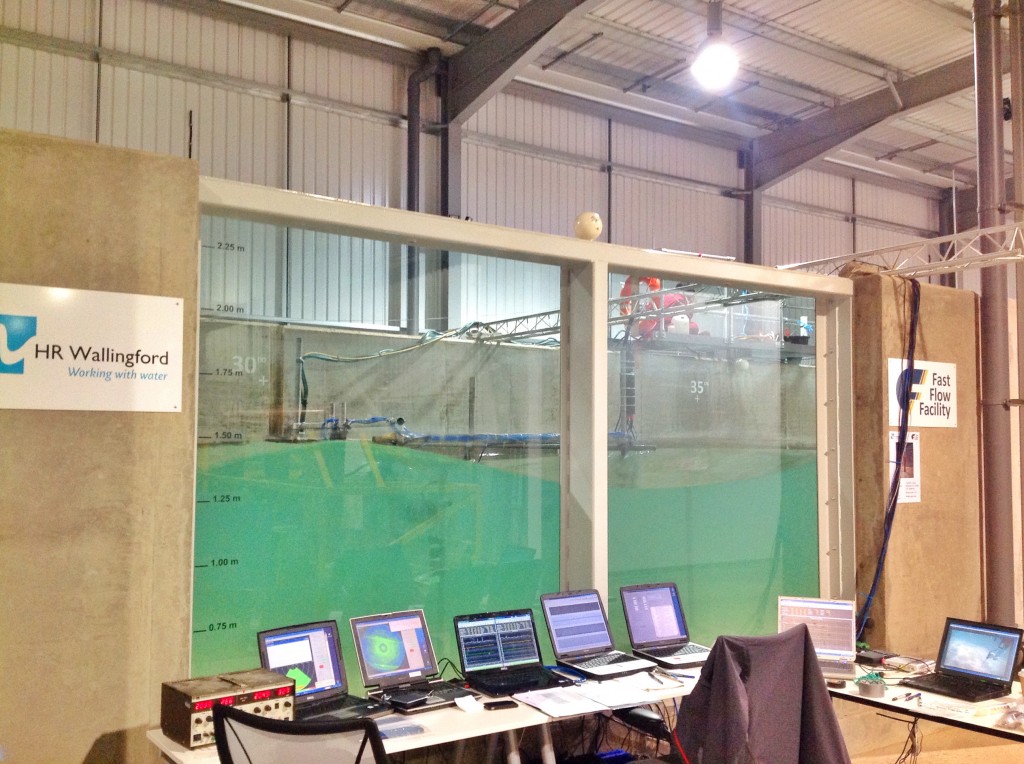
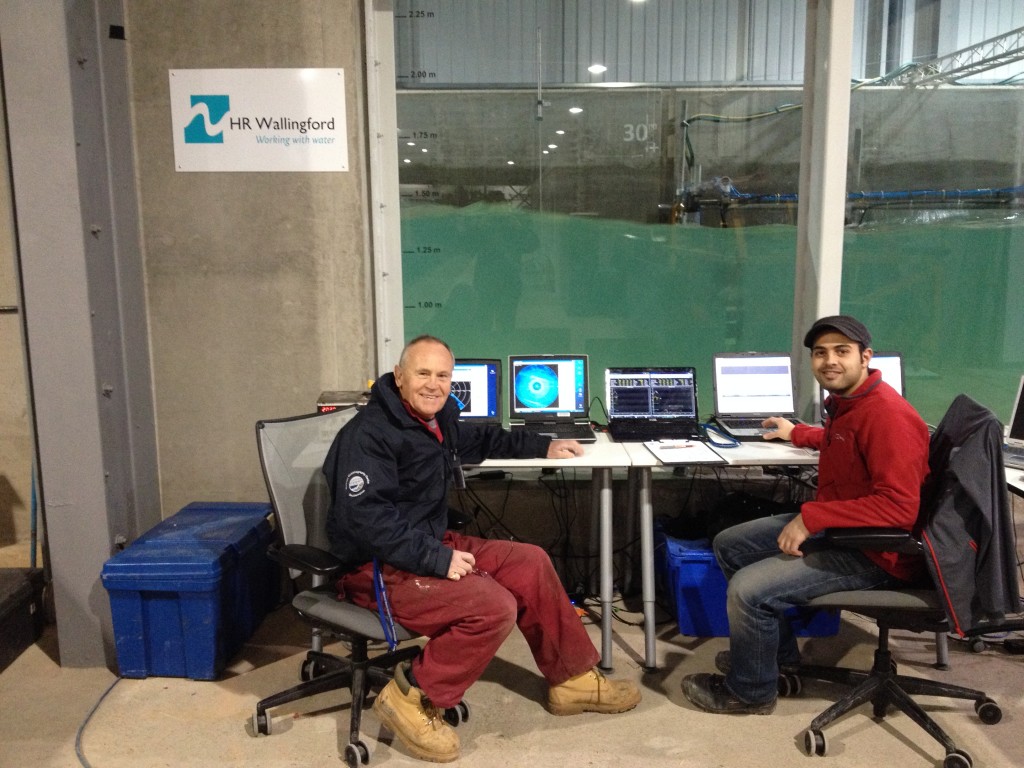
To measure turbulence and sediment fluctuations near the bed, an instrumented rig was constructed in the central sediment pit of the flume (1 m deep; 16 m2), 30 m away from the wave paddles, with two bed sections (28 cm deep) on either side. The rig comprised a suite of high frequency acoustic instruments and sonars, including 3 Nortek acoustic Doppler Velocimeters (ADVs), a four-frequency acoustic backscatter sensing profiler (loaned by Aquatec as an award), as well as a Marine Electronics sediment imaging sonar and a sector scanning sonars to image the bed morphology and bedform migration. The frame also featured an rbr Duo Pressure transducer (also measuring temperature); an underwater camera, and multiple-intake pump nozzles for water sampling. The flume itself was equipped with multiple wave probes, and whenever it was drained, detailed laser scans of the bed morphology were carried out.
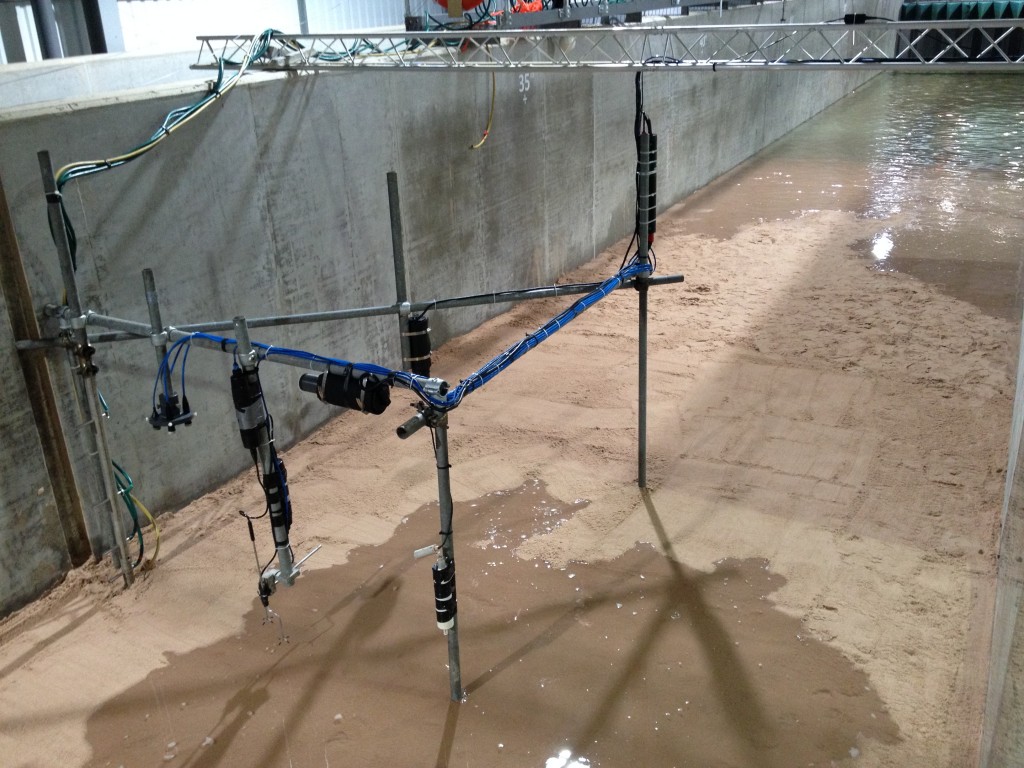
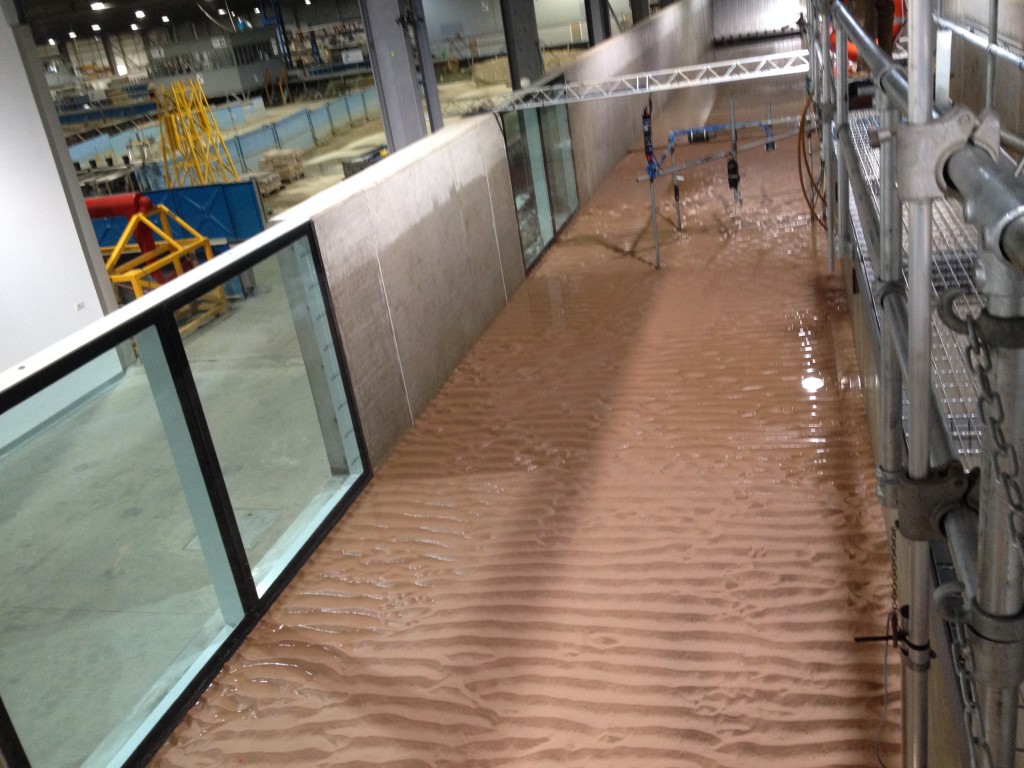
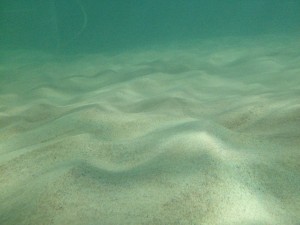
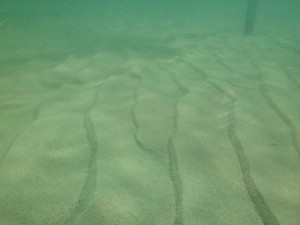
The experimental program included multiple wave runs with a variety of conditions in two water depths (~1.5 and 1m); with regular and irregular (Jonswap spectrum) waves ranging between 0.1 and 0.4m high, and 1 – 3 sec periods, currents both along and against the direction of wave propagation (between 0.1 and 0.6 m/s).
You can watch some waves through the following links:
